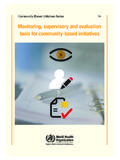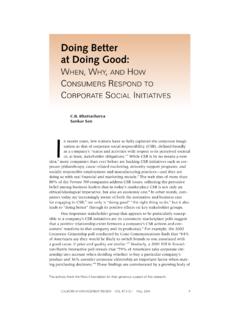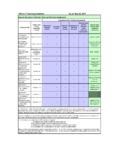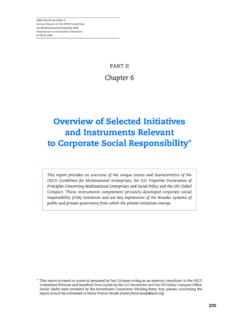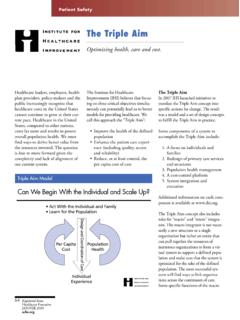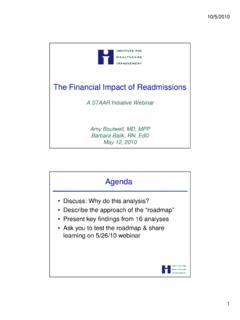Transcription of CLUSTERS FOR COMPETITIVENESS - World Bank
1 THE World BANK 1818 H Street, Washington, DC 20433. CLUSTERS FOR COMPETITIVENESS . A Practical Guide &. Policy Implications for Developing cluster Initiatives February 2009. CLUSTERS FOR. COMPETITIVENESS . A Practical Guide &. Policy Implications for Developing cluster Initiatives February 2009. Table of content vii 1. vii 2. Purpose, target audience, and the structure of the viii Chapter 1. A cluster -based approach to COMPETITIVENESS : Key 1. 1. What are Industrial CLUSTERS ?.. 1. 2. What are cluster Initiatives?.. 3. 3. What is the role of the public sector?
2 6. 4. How do cluster initiatives compare to other instruments?.. 7. Chapter 2. Key tools for implementation of cluster 11. Tool 1: cluster 14. Tool 2: Product and Market 18. Tool 3: SWOT Strengths, Weaknesses, Opportunities, and 21. Tool 4: GAP 24. Tool 5: Porter's 26. Tool 6: Value-Chain 31. Tool 7: Market Trend 35. Tool 8: Competitive Position 40. Tool 9: Old and New Institutions for 44. Tool 10: Monitoring and Evaluation:The 47. Chapter 3. A broad process to develop a cluster 51. Stage 1: cluster Mapping and Initial COMPETITIVENESS Engagement.
3 52. Stage 2: Diagnostics and Strategy Formulation .. 56. Stage 3: Implementation of Strategic, Policy, and Institutional Initiatives .. 60. Stage 4: Post- initiative 65. iii Chapter 4. Policy implications for 67. 1. A supplementary cluster tool: Porter's Framework on 69. 2. cluster initiatives as policy catalysts for 74. Annexes 79. 81. iv Acknowledgements This publication was prepared by Mallika Shakya of International Trade Department of the World draft report that formed the basis for writing of this publication was developed by a team at Austin As- sociates Inc.
4 Led by Kevin Murphy, and including Kwang Kim and Justin Stokes. Peer reviewers of this publication were Christian Ketels from Institute for Strategy and COMPETITIVENESS of the Harvard Business School and Mark Dutz from South Asia Finance and Private Sector Development unit of the World overall project was undertaken under the guidance of Mona Haddad, Sector Manager, International Trade Depart- toolkit contributes to the knowledge development program of the Export COMPETITIVENESS Thematic Group led by the Internation- al Trade Department.
5 Additional feedback was received from Michael Wong,Yutaka Yoshino, Douglass Zeng, Maiko Miyake, Shaun Mann, Vincent Palmade, Alfred Wat- kins, Eric Manes, Anil Sinha and John Speakman. Kerry Frasers provided editorial and designing assistance in finalizing the report for publication. Amelia Yuson and Zijing Niu provided sup- port for production. v OVERVIEW. overview 1. Context Development experience from around the World has shown that the determinants of export COMPETITIVENESS are many and arguments for investment in physical capital and infrastructure have been long present.
6 Neoclassical economists, then, emphasized getting Determinants the macro fundamentals right so resources flow into the right sectors, of export and within those sectors, the right firms. Further, economists looked COMPETITIVENESS at other issues: human and social capital, technological progress and are many and innovation, business enabling environments, firm sophistication and complex . demand conditions, product and market diversification, etc. Academics and practitioners have now generally come to agree that many of these issues are not mutually exclusive but jointly supportive.
7 The World Bank Group's Export COMPETITIVENESS initiative , which aims to develop synergies among practitioners working on economic growth, trade and private sector development, has underscored several of the above issues. It draws on a myriad of policy tools and approach- es already employed in the World Bank Group's work on trade and economic policy, customs and logistics, and direct enterprise support. The policy agenda that typically emerges from a COMPETITIVENESS analy- sis relates to three core areas, and collectively they offer a platform on which necessary policy dialogues can be developed: Macro fundamentals ( , economic biases due to tariff and non- tariff trade barriers, real exchange rate misalignment, tax distor- tions, overall fiscal health of the economy).
8 One should Hard and soft infrastructure ( , infrastructure, customs and start with a basic trade logistics, the costs of doing business). framework. Supply-side measures ( , technology creation and adaptation, product standards and certification, export promotion, human re- source development). vii The cluster -based approach presented in this report complements such a platform by offering a new way of dividing and understanding an overview economy and formulating policies and practices. A cluster is a system The cluster -based of interconnection between private and public sector entities.
9 It usually approach offers a comprises a group of companies, suppliers, service providers, and associ- new way of dividing ated institutions in a particular field, linked by externalities and comple- and understanding mentarities. An example would be a country's auto industry, with its an economy manufacturers and all their supporting services, such as parts and equip- ment suppliers, transportation companies, retail distributors, educational institutions and R&D firms, public relations and advertising agencies, etc. A cluster approach may be used in addition to the usual economy-wide analyses.
10 cluster analysis encourages engagement with a diverse group and complements of stakeholders through which they may develop a shared understand- economy-wide ing of the underlying public policy issues and act on them jointly. analyses. Developing such a joint platform with strong ownership by the public and private sector stakeholders is often crucial in jump starting more comprehensive economic reform processes in developing countries. A cluster -based approach enables the policy debate and actions to be more strategic and incremental.












